- Introduction – Frequently Asked Questions About Jazz
- Part 1: What is Jazz, and Where Did It Come From?
- Part 2: What Makes Jazz So Unique? (The Art of Improvisation & Styles)
- Part 3: Why Does Jazz Still Matter Today? (Its Influence & Cultural Impact)
- Let’s Talk | Listening Practice
- Let’s Learn Vocabulary in Context
- Let’s Discuss & Write
- Here’s What We Think
- Jazz is often described as “the sound of freedom.” Do you think this applies only to music, or can this concept be applied to other areas of life? How do you see freedom expressed in different forms of art or personal expression?
- Improvisation is at the heart of jazz, but it’s also a valuable skill in real life. Can you think of a time when you had to improvise on the spot? How did it turn out, and what did you learn from the experience?
- Many modern musicians borrow elements from jazz, even in genres like hip-hop and electronic music. Do you think it’s important to acknowledge jazz’s influence on modern music, or do you think genres naturally evolve and mix over time?
- Some people say jazz is “too complex” or “too unpredictable” to enjoy. Do you agree or disagree? What kind of music do you personally connect with, and why?
- In jazz, mistakes are often turned into creative opportunities. Do you think this approach could change the way we look at mistakes in other areas of life, like work, relationships, or personal growth? How do you personally deal with making mistakes?
- How We’d Write It
- Before We Go
- Keep the Conversation Going
- Let’s Play & Learn
Introduction – Frequently Asked Questions About Jazz
Close your eyes for a moment.
It’s a rainy night in New Orleans. You’re walking down Frenchmen Street, and the neon signs flicker as the raindrops catch their glow. You don’t know exactly where you’re going, but the music—oh, the music—pulls you in. It seeps through the cracks of an old wooden door, a hypnotic blend of piano, trumpet, and upright bass, like a conversation between old friends who speak a language you’ve never heard but somehow understand.
You step inside. The place is alive. The saxophonist sways as he plays, eyes closed, lost in the moment. The drummer grins as he throws in an unexpected beat, and the bassist locks in, grounding it all with a groove so deep it feels like it could carry you home. And then it happens—right in the middle of the song, the pianist starts playing something different. The trumpet follows, the whole band shifts, and suddenly, it’s an entirely new piece, created in real time. No sheet music, no rehearsal—just pure improvisation.
And that’s jazz. A living, breathing art form. It’s not just music—it’s a way of thinking, a way of being. But what is jazz, really? Where did it come from? How do musicians improvise like that? And why does this century-old genre still matter today?
That’s exactly what we’re diving into in today’s episode. Whether you’re a jazz lover or just someone who wants to understand this fascinating world better, you’re in the right place. We’re going to unravel the mysteries of jazz, answer the most frequently asked questions, and along the way, we’ll enrich your English with new words, expressions, and cultural insights.
So, grab a seat, maybe even a cup of coffee, and let’s swing into it. 🎷✨
Part 1: What is Jazz, and Where Did It Come From?
If jazz were a person, it would be that unpredictable friend who always has a wild story to tell, never follows the plan, and somehow makes it work every single time. You know, the kind of person who suggests a spontaneous road trip at midnight and, against all logic, convinces you to go.
But before jazz became this free-spirited, rule-breaking phenomenon, it had to be born somewhere. And that somewhere was New Orleans—a city that, much like jazz itself, is a blend of cultures, influences, and history.
A Story of Origins
Picture a busy street in New Orleans in the late 1800s. The air is thick with the scent of fresh beignets and the distant sound of a steamboat horn on the Mississippi River. A group of musicians marches down the road, playing instruments that have seen better days, but you wouldn’t know it from the sound. The trumpet sings, the trombone wails, the drums keep time like a heartbeat. People stop what they’re doing to listen. Some even start dancing.
This isn’t just a performance—it’s an experience. A conversation.
This is how jazz was born. Not in a grand concert hall, not in some academic music school, but in the streets, in the juke joints, in the places where people lived and breathed music. It was a mix of African rhythms, blues, ragtime, and even classical influences, brought together by African American musicians who took the music they knew and reshaped it into something completely new.
But What Is Jazz, Really?
If you ask ten different jazz musicians to define jazz, you’ll probably get ten different answers. Some will say it’s about improvisation, the art of making music on the spot. Others will say it’s about swing, that irresistible rhythm that makes your foot tap before you even realize it. And some will argue that jazz is more than just music—it’s a way of life.
The truth? Jazz is all of these things. It’s a genre that embraces freedom, spontaneity, and expression. Unlike classical music, which is often written and rehearsed note for note, jazz thrives on the unexpected. That’s why no two performances of the same jazz song are ever exactly alike.
Think about it this way: if a rock band is like a well-rehearsed play, jazz is like an improv comedy show. The musicians are reacting to each other in real time, playing off one another, sometimes taking the music in a direction even they didn’t expect.
And that, my friends, is why jazz can feel so alive.
The Journey of Jazz Around the World
At the start of the 20th century, jazz was still a New Orleans secret. But secrets never stay hidden for long.
As African American musicians traveled north in search of new opportunities, they carried jazz with them. It found a new home in Chicago, then New York, where the Harlem Renaissance embraced it as an art form. It swung through Kansas City, got sophisticated in Paris, and electrified in Tokyo.
By the 1930s, jazz had become America’s pop music, played in dance halls and on radio stations across the country. But just as quickly as it rose, jazz began to evolve. New styles emerged—swing, bebop, cool jazz, fusion—each adding something fresh to the mix.
Why Should We Care About Jazz Today?
Now, you might be thinking: This is all fascinating, but why does jazz still matter?
Well, imagine modern music without jazz. No blues, no rock, no hip-hop, no R&B. That’s right—jazz is the musical ancestor of most popular music today. It paved the way for freedom in musical expression, for artists breaking the mold, for the idea that music doesn’t always have to follow a strict formula.
And here’s the thing: jazz isn’t just about music. It’s about innovation, creativity, and finding your own voice—whether that’s through an instrument, your words, or even just the way you approach life.
So, next time you hear a jazz song, whether it’s Louis Armstrong making his trumpet sing or a saxophonist in a subway station improvising a melody, take a moment to listen. Because jazz isn’t just about the notes being played. It’s about the story they’re telling.
And speaking of stories, in the next section, we’re diving into one of the most fascinating parts of jazz: improvisation. How do jazz musicians make it up on the spot? Is there a secret formula? And why does it sound so effortless? Stick around—we’re just getting started. 🎷✨
Part 2: What Makes Jazz So Unique? (The Art of Improvisation & Styles)
If you’ve ever seen a jazz band perform live, you’ve probably had this thought at least once: Wait a minute… they’re making this up as they go?!
And yes, in many cases, they are.
Improvisation: The Magic Trick of Jazz
Imagine you’re at a jazz club. The band starts playing a familiar melody, something smooth and comforting, like an old friend telling you a story you’ve heard before. But then—out of nowhere—the saxophonist takes off on a solo. The melody bends, twists, takes on a life of its own. It’s unpredictable, playful, full of personality.
And here’s the kicker: he’s not reading from sheet music. He’s making it up, right there, in the moment.
This is what makes jazz different from almost every other kind of music. Improvisation isn’t just a feature of jazz—it’s its heart and soul.
But before you start thinking that jazz musicians are just musical magicians pulling notes out of thin air, let’s break it down. Improvisation in jazz is a lot like having a deep conversation.
- First, you have to know the language. (In jazz, this means understanding scales, chords, and rhythm.)
- Then, you listen to what the others are saying. (A jazz musician doesn’t just play randomly; they react to what’s happening around them.)
- Finally, you add your own voice, building on what came before but making it yours.
So when you hear a jazz musician improvise, you’re not just hearing random notes—you’re hearing a conversation happening in real-time.
Some solos are smooth and elegant, like a poet carefully choosing their words. Others are wild and explosive, like someone telling a story with too much excitement to sit still. And the best part? No two performances are ever the same.
The Many Faces of Jazz: A Quick Tour of Its Styles
Jazz is like a world traveler. It doesn’t just stay in one place, one form, or one era—it evolves, adapts, and reinvents itself over time. That’s why we have so many different styles of jazz, each with its own personality.
Let’s take a quick trip through some of the most important ones:
1. Swing – The Music That Made America Dance
Imagine it’s the 1930s. The Great Depression has people down, but one thing is keeping spirits high: swing music. Big bands take the stage, playing music so energetic it’s impossible not to dance.
Swing jazz is all about rhythm, with a steady beat that makes you want to tap your feet. It’s what made artists like Duke Ellington, Count Basie, and Benny Goodman household names.
(Fun fact: The term “it don’t mean a thing if it ain’t got that swing” comes from a famous Duke Ellington song!)
2. Bebop – When Jazz Got Fast and Complicated
Fast-forward to the 1940s. Musicians like Charlie Parker and Dizzy Gillespie are getting bored of predictable, danceable jazz. They want something more challenging, something that pushes musical boundaries.
Enter bebop—a fast, complex, and sometimes chaotic style of jazz that’s more about musicianship than making people dance. Bebop is full of rapid chord changes, unexpected notes, and crazy-fast solos. It’s like the brainy, rebellious teenager of the jazz family.
3. Cool Jazz – Laid-Back, but Still Brilliant
Not everyone wanted jazz to be fast and furious. Some musicians, like Miles Davis, decided to slow things down a bit. Thus, cool jazz was born in the 1950s.
Think of cool jazz as jazz with sunglasses on—smooth, mellow, and effortlessly cool. It’s the kind of music that makes you want to sit in a dimly lit lounge with a drink in hand, just vibing to the sound of a muted trumpet.
4. Free Jazz – Jazz Breaks All the Rules
Now, imagine a group of musicians who decide that even jazz has too many rules. They don’t want a steady rhythm. They don’t want predictable chords. They just want pure, unfiltered expression.
This is free jazz, a style where anything goes. It’s experimental, wild, and sometimes even a little strange. But for those who love it, it’s one of the most exciting and raw forms of jazz.
(Imagine a jazz band where everyone is having a different conversation at the same time but somehow, it still makes sense—that’s free jazz!)
5. Fusion – Jazz Meets Rock, and the World Changes
By the 1970s, rock and funk were dominating the music scene. But instead of resisting, jazz did what it always does—it adapted. Musicians like Herbie Hancock and Weather Report started mixing jazz with electric guitars, synthesizers, and funk rhythms, creating jazz fusion.
Fusion is loud, electric, and energetic. If swing jazz was music for dancing, fusion jazz was music for headbanging.
Why Does Improvisation Matter Beyond Jazz?
Now, here’s something to think about: improvisation isn’t just a jazz skill—it’s a life skill.
Think about it. Life rarely goes exactly as planned. Conversations don’t always follow a script. Sometimes, you have to think on your feet, adapt, and go with the flow—just like a jazz musician.
That’s why jazz is such an important art form. It reminds us that mistakes aren’t failures—they’re opportunities. A wrong note? That’s just a chance to take the music in a new direction.
And maybe that’s why jazz feels so alive. Because just like life, it’s unpredictable, full of surprises, and always, always evolving.
What’s Next?
So far, we’ve uncovered where jazz comes from and what makes it unique. But in the final part of this episode, we’re going to answer an even bigger question: Why does jazz still matter today?
From its influence on modern music to its deep cultural significance, jazz isn’t just something from the past—it’s a force that still shapes the world today.
So stay tuned, because we’re about to uncover why jazz is still one of the most powerful art forms on the planet. 🎷✨
Part 3: Why Does Jazz Still Matter Today? (Its Influence & Cultural Impact)
Picture this: You’re walking through a crowded city, earbuds in, scrolling through your playlist. Maybe there’s some hip-hop, a bit of pop, maybe even some lo-fi beats to help you focus.
Now, hit pause for a second.
What if I told you that, in one way or another, almost every genre of modern music owes something to jazz?
That’s right—without jazz, we wouldn’t have blues, rock, funk, R&B, hip-hop, or even electronic music the way we know it today. So even if you don’t actively listen to jazz, jazz is still very much a part of your world.
But jazz isn’t just a historical artifact gathering dust in a museum—it’s still evolving, shaping new music, and influencing culture in ways that might surprise you.
How Jazz Shaped the Music We Love Today
Let’s rewind to the 1950s. Rock and roll is just starting to take shape, but here’s the thing—before Elvis Presley, before The Beatles, there was jazz. The bluesy guitar licks? The raw emotion? The idea that music should be expressive, not just structured? All of that came from jazz and blues musicians experimenting with sound.
Fast-forward to the 1970s, and funk music bursts onto the scene. The groove-heavy basslines, the complex rhythms—where did they come from? That’s right, jazz.
Now, let’s jump to the 1980s and 90s. Hip-hop is rising, and rappers are sampling old records to create something new. And guess which records they kept going back to? Jazz. Artists like A Tribe Called Quest and J Dilla built entire careers around jazz samples, turning old jazz loops into the backbone of hip-hop.
Even electronic music—the pulsing beats of house, the improvisational nature of techno—owes a lot to jazz musicians who weren’t afraid to experiment with sound.
Jazz isn’t a thing of the past. It’s the DNA of the music we listen to today.
More Than Music: Jazz as a Cultural Movement
Jazz didn’t just change music—it changed the world.
In the 1920s, jazz wasn’t just a genre; it was a revolution. The Harlem Renaissance in New York saw African American artists, poets, and musicians using jazz to break boundaries and redefine culture. Jazz clubs became places where different races and social classes mixed—something that was unheard of in many parts of the U.S. at the time.
By the 1950s and 60s, jazz was deeply intertwined with the civil rights movement. Musicians like Nina Simone, John Coltrane, and Charles Mingus used their music to make powerful statements about racial injustice, freedom, and equality. Jazz became a voice for those who refused to be silenced.
And today? Jazz continues to be a force for social change. Whether it’s Esperanza Spalding redefining what it means to be a jazz artist, or Kamasi Washington blending jazz with hip-hop and orchestral music, jazz remains one of the most powerful forms of artistic expression.
Jazz in the Modern World: Is It Still Relevant?
Okay, so maybe jazz isn’t topping the Billboard charts anymore. You won’t see a jazz album outselling a Taylor Swift record (although, hey, never say never). But that doesn’t mean jazz is fading away—it’s just evolving, adapting, and finding new ways to stay alive.
- Jazz is in film scores – Think about the soundtrack of La La Land or the legendary jazz compositions in Pixar’s Soul.
- Jazz is in video games – Ever played Cuphead? Its entire soundtrack is inspired by the wild jazz of the 1920s and 30s.
- Jazz is in streaming playlists – Lo-fi jazz beats? Chill coffeehouse jazz? Even if you don’t realize it, jazz is probably in your daily background music.
And let’s not forget live music—because if there’s one thing jazz will always have, it’s that magical, unpredictable, live experience. Whether it’s a big jazz festival in New Orleans or a tiny underground club in Tokyo, jazz is still being played, still being created, still evolving.
So Why Does Jazz Matter?
Let’s sum it up.
- It changed the way we think about music – Improvisation, freedom, pushing boundaries… these are all gifts jazz gave to the world.
- It influenced almost every major genre of music today – From rock to hip-hop, jazz’s fingerprints are everywhere.
- It was a major force for cultural and social change – Jazz didn’t just entertain; it challenged. It broke down barriers and gave people a voice.
- It’s still alive and evolving – Whether in film, gaming, hip-hop, or underground clubs, jazz is still making waves.
So the next time you hear someone say, “Jazz is old music”, you can hit them with this:
Jazz isn’t old. Jazz is timeless.
Final Thought: What’s Your Jazz?
Here’s a fun challenge: Find a jazz song—any song, any era—and just listen. Don’t analyze it, don’t overthink it. Just let it take you somewhere.
Because jazz isn’t about playing the right notes—it’s about feeling something. And if a song can do that? Well, that’s music worth listening to. 🎷✨
Want to explore more? Check out our website, englishpluspodcast.com, for bonus jazz vocabulary, recommended playlists, and exercises to help you use what you learned today in your English practice.
And as always, keep learning, keep exploring, and maybe… keep a little jazz in your life. 🎶
Reading Comprehension Quiz
Let’s Talk | Listening Practice
Listening Transcript (Please try to listen first and take the quiz without reading the transcript)
You know, the more I think about jazz, the more I realize—it’s not just music. It’s a way of handling life. Hear me out.
Think about the last time life threw you a curveball. Maybe your carefully planned schedule got wrecked by something completely out of your control. Maybe you started a conversation with someone expecting it to go one way, and it ended up somewhere you never saw coming. Or maybe, just maybe, you tried cooking something new, and halfway through, you realized you were missing half the ingredients.
What did you do?
Did you panic? Or did you… improvise?
That’s jazz.
One of the things I didn’t get to dive into earlier is just how much jazz can teach us about adaptability. It’s an art form that thrives on uncertainty—on musicians not knowing exactly what’s going to happen next, and being completely okay with that. More than okay, actually—they embrace it. They take the unexpected and turn it into something new, something that works, something uniquely theirs.
How often do we do that in real life?
Most of us like structure. We like plans. We like knowing what’s coming next. And yet, the moments that define us—those pivotal, life-changing moments—are rarely the ones we planned for. They’re the times we had to think on our feet, adjust to something unexpected, or completely change course because the old way just wasn’t working anymore.
And that’s why I think everyone—not just musicians—should have a little jazz in their mindset.
Now, let’s talk about something else we didn’t cover earlier: jazz as a conversation.
We mentioned improvisation, but have you ever noticed how a great jazz performance sounds like a group of people just talking to each other? The pianist throws in a playful riff, the saxophonist answers back, the drummer jumps in like someone who can’t help but join the debate. They’re reacting, responding, building on each other’s ideas.
That’s communication at its best. Imagine if we all approached conversations like jazz musicians. Instead of just waiting for our turn to talk, what if we actually listened—really listened—and responded in a way that added something new, something fresh, something that kept the conversation alive?
And another thing—why is jazz one of the few places where mistakes are not just accepted, but actually welcomed? You ever think about that?
A jazz musician can hit a note that wasn’t part of the plan, and instead of stopping and apologizing, they lean into it. They turn that mistake into part of the melody. They make it sound intentional. They keep going, and somehow, it works.
Meanwhile, in life, we trip over a word during a presentation, and suddenly we feel like we’ve ruined the whole thing. We make one small mistake at work, and we obsess over it for days. But what if we thought about mistakes the way jazz musicians do? Not as disasters, but as opportunities to take things in a new direction?
Wouldn’t that change everything?
So, here’s my challenge for you:
- Try improvising in your daily life. Say yes to something you’d normally overthink.
- Next time a conversation takes an unexpected turn, go with it. See where it leads.
- And when you make a mistake? Instead of beating yourself up, see if you can turn it into part of the bigger picture.
Because if jazz has taught us anything, it’s that sometimes the best things happen when we stop worrying about the perfect plan… and just start playing. 🎷✨
Listening Comprehension Quiz
Let’s Learn Vocabulary in Context
Before we get into vocabulary, let’s talk about something that makes jazz special: improvisation. We mentioned it earlier, but think about what it really means. It’s not just about playing random notes on a saxophone and hoping for the best. It’s about knowing the structure, understanding the patterns, and then having the freedom to break them in a way that sounds intentional. Now, if that doesn’t sound like a life skill, I don’t know what does.
Speaking of skills, let’s dig into some of the words and phrases from today’s topic that can be just as useful in everyday conversation as they are in a jazz club.
One of the words that kept coming up was “groove.” In jazz, the groove is that rhythmic feel that makes you want to move. But outside of music, groove is about getting into the right flow. Ever had a day where everything just clicks? You’re getting work done, your energy is up, and you’re feeling unstoppable? That’s being “in the groove.” And the opposite? That’s when someone tells you, “Ugh, I just can’t get into the groove today,” meaning they can’t seem to find their rhythm.
Then there’s “riff.” Musicians use riffs as short, repeated phrases that shape a song. But in conversation, we riff all the time. Ever just bounce ideas back and forth with someone, maybe joking around, maybe brainstorming? That’s riffing. “Hey, let’s riff on some ideas for this project” is basically the professional version of “Let’s throw some thoughts around and see what sticks.”
Another great one is “off the cuff.” In jazz, a solo can be played off the cuff—completely unplanned, spontaneous. In everyday life, the same thing applies. You give a speech with no preparation? That’s an off-the-cuff speech. Someone asks you a question, and you come up with a smart answer on the spot? That’s an off-the-cuff response. It’s basically another way of saying “improvised,” which, as we now know, is a very jazzy way of handling things.
And speaking of jazz, there’s “to jazz something up.” This one’s easy to guess. If something looks plain or boring, and you add a little flair to make it more exciting, you’re jazzing it up. “This room is so dull—let’s jazz it up with some plants.” Or, “Your presentation is great, but maybe jazz it up with some visuals.” Simple, right?
Now, let’s talk about “march to the beat of your own drum.” Jazz musicians definitely do this, but so do people who refuse to follow the crowd. If you know someone who never cares about trends, dresses the way they want, and does things their own way, they’re marching to the beat of their own drum. It’s usually a compliment, unless you’re trying to get someone to follow instructions and they just refuse.
Then we have “play by ear.” Musicians who play by ear don’t need sheet music—they just listen and play. In daily life, playing something by ear means you don’t have a set plan, and you’ll figure things out as you go. “We don’t have a schedule for the trip, we’ll just play it by ear.” It’s a great phrase for people who prefer a more go-with-the-flow attitude.
That brings us to “strike a chord.” In music, a chord is when multiple notes are played together. In conversation, when something resonates with someone emotionally, we say it strikes a chord. “His speech about perseverance really struck a chord with me,” means it deeply connected with you.
Another one that comes straight from music is “set the tone.” In a jazz performance, the first few notes can set the whole mood for what’s coming next. In life, you set the tone in a meeting, a conversation, even in how you start your day. “She set the tone for the discussion with her opening remarks” means she shaped the atmosphere right from the beginning.
And then there’s “ahead of its time.” Jazz legends like Miles Davis and John Coltrane were always ahead of their time—experimenting with sounds and ideas that people didn’t fully appreciate until years later. We use this phrase when someone or something is innovative but isn’t recognized right away. “That movie was ahead of its time” or “Her ideas about remote work were ahead of their time” means they were groundbreaking before the world caught up.
Finally, let’s talk about “call and response.” This is a classic jazz technique where one musician plays a phrase, and another answers. But it happens in everyday conversation too. Think about those moments when you’re joking with a friend, and they immediately come back with a clever reply—it’s a verbal call and response. It’s also a technique used in speeches, when the speaker says something, and the audience responds—think “I say jazz, you say music! Jazz! (Music!) Jazz! (Music!).”
So, what’s the takeaway? Jazz isn’t just music—it’s a whole way of thinking. It’s about flow, creativity, reacting in the moment, and knowing how to turn mistakes into something brilliant. And if you can bring a little of that jazz spirit into your daily life—whether it’s in the way you talk, work, or even handle the unexpected—you might just find yourself grooving through life a little more smoothly.
Vocabulary Quiz
Let’s Discuss & Write
Let’s Discuss
- Jazz is often described as “the sound of freedom.” Do you think this applies only to music, or can this concept be applied to other areas of life? How do you see freedom expressed in different forms of art or personal expression?
- Improvisation is at the heart of jazz, but it’s also a valuable skill in real life. Can you think of a time when you had to improvise on the spot? How did it turn out, and what did you learn from the experience?
- Many modern musicians borrow elements from jazz, even in genres like hip-hop and electronic music. Do you think it’s important to acknowledge jazz’s influence on modern music, or do you think genres naturally evolve and mix over time?
- Some people say jazz is “too complex” or “too unpredictable” to enjoy. Do you agree or disagree? What kind of music do you personally connect with, and why?
- In jazz, mistakes are often turned into creative opportunities. Do you think this approach could change the way we look at mistakes in other areas of life, like work, relationships, or personal growth? How do you personally deal with making mistakes?
Writing Prompt
“The Soundtrack of My Life”
Jazz is often said to be more than just music—it’s a feeling, a mindset, a way of seeing the world. Think about your own life. If your life were a jazz piece, what would it sound like? Would it be upbeat and full of energy, or slow and reflective? Would there be unexpected twists, dramatic solos, or a steady groove carrying you forward?
Write a short reflective piece (about 300-500 words) describing your life as a piece of music. You can structure it in a storytelling style, describing key moments in your life as different “movements” in the composition. Or you can be more abstract and write about how different emotions, experiences, and challenges would sound if they were turned into music.
Tips for Writing Your Piece:
- Start with a strong opening: Set the scene. Maybe it’s the beginning of your story, like the opening notes of a jazz piece.
- Use descriptive language: Instead of saying “I was excited,” try “The melody soared, light and playful, as if the notes themselves were laughing.”
- Think in contrasts: Life has ups and downs, just like jazz. Is there a moment where the rhythm changes? A sudden pause? A chaotic burst of sound?
- Reflect on meaning: What does the “music” of your life say about you? Has it changed over time? What does it sound like now?
Useful Phrases to Use in Your Writing:
- “If my life were a jazz song, it would start with…”
- “The rhythm of my days used to be steady, predictable, until…”
- “There were moments of improvisation, times when I had to make up the melody as I went.”
- “Some days felt like a smooth saxophone solo, others like a chaotic drum battle.”
- “The music of my life still plays, shifting with every new experience, always unfinished, always evolving.”
So, what does the soundtrack of your life sound like? Let’s hear it in the comments! 🎷✨
Here’s What We Think
Jazz is often described as “the sound of freedom.” Do you think this applies only to music, or can this concept be applied to other areas of life? How do you see freedom expressed in different forms of art or personal expression?
Absolutely, jazz is freedom in musical form, but the idea of freedom in art goes way beyond jazz. Think about painting—abstract artists like Jackson Pollock didn’t follow strict rules; they threw paint on a canvas and let the piece take shape organically. That’s jazz energy, just in visual form. Or in dance, breakdancers and contemporary performers often improvise on the spot, much like a jazz musician creating a solo. Even in writing, stream-of-consciousness styles—where thoughts spill onto the page without rigid structure—echo the spontaneity of jazz. So yeah, jazz is freedom, but so is any art form that embraces spontaneity, raw emotion, and personal interpretation. In a way, freedom in art is the ability to express something without being boxed in by rules.
Improvisation is at the heart of jazz, but it’s also a valuable skill in real life. Can you think of a time when you had to improvise on the spot? How did it turn out, and what did you learn from the experience?
Oh, all the time. Life is basically one long jazz solo, isn’t it? One classic example: public speaking. I once prepared for a talk, had all my notes in order, and then—boom—technical issues. No slides, no prompts, just me and the audience. At that moment, I had two choices: panic or improvise. I went full jazz mode, relied on what I knew, played off the audience’s energy, and honestly, it turned out better than if I had followed my script word for word. The lesson? Being too rigid can sometimes hold you back. When you leave space for improvisation, you leave space for something unexpectedly great to happen.
Many modern musicians borrow elements from jazz, even in genres like hip-hop and electronic music. Do you think it’s important to acknowledge jazz’s influence on modern music, or do you think genres naturally evolve and mix over time?
Both. Music evolves naturally—just like language, culture, and fashion—but acknowledging jazz’s role is important because it helps us appreciate where music comes from. Hip-hop, for example, heavily sampled jazz in its early days. Artists like J Dilla and A Tribe Called Quest built their sound on jazz beats. Even electronic music borrows jazz elements, like syncopation and improvisational layering. Recognizing jazz’s influence doesn’t take away from modern artists; it actually enriches their work by showing the roots of their sound. And honestly, it’s just cool to see how one genre from the early 1900s is still shaping global music trends today.
Some people say jazz is “too complex” or “too unpredictable” to enjoy. Do you agree or disagree? What kind of music do you personally connect with, and why?
I get it—jazz can be a lot. Some styles, like bebop or free jazz, feel chaotic, like five musicians having separate conversations at the same time. But that’s just one side of jazz. There’s smooth jazz, swing, Latin jazz—so many different flavors that there’s honestly something for everyone. It’s kind of like coffee. Some people love their espresso straight-up and intense, others want a caramel macchiato. Saying jazz is “too complex” is like saying “coffee is too bitter” without realizing there are hundreds of ways to drink it. Personally, I connect with jazz because it surprises me. It’s like a conversation with an old friend who always has something new to say. And the unpredictability? That’s what keeps it interesting.
In jazz, mistakes are often turned into creative opportunities. Do you think this approach could change the way we look at mistakes in other areas of life, like work, relationships, or personal growth? How do you personally deal with making mistakes?
Absolutely, and I wish more people saw mistakes the way jazz musicians do. In work, we’re often taught to fear mistakes, but in jazz, a “wrong” note can become the best part of a solo if you own it and build on it. Same goes for relationships—misunderstandings, if handled right, can actually deepen connections instead of ruining them. And in personal growth? Well, the best lessons come from mistakes. I used to dread making mistakes, but then I realized they’re just improvisation opportunities in disguise. Now, when I mess up, I ask myself: What can I do with this? Where can I take it next? That shift in mindset has made all the difference.
So what about you? Have you had a “jazz moment” in life where you had to improvise or turn a mistake into something great? Let’s keep the conversation going! 🎷✨
How We’d Write It
The Soundtrack of My Life
If my life were a jazz piece, it would start with a slow, steady bassline. Something simple, almost hesitant, like a musician warming up before stepping into the spotlight. In the beginning, everything was structured—predictable rhythms, clear melodies, no surprises. I followed the sheet music, sticking to the notes I was taught to play.
But then, as the years went by, the music started to change. The tempo picked up. A few unexpected drum hits here and there, like sudden detours that forced me to improvise. The melody shifted, sometimes playful and full of energy, other times melancholic and deep. There were solos—moments where I felt like I was figuring things out on my own, taking risks, hitting a few wrong notes but learning to roll with them.
One of the biggest solos came when I had to make a life-changing decision. The music slowed, like a saxophonist pausing before diving into a new phrase. I hesitated, unsure if I should follow the predictable melody or take a leap into the unknown. And then—just like in jazz—I took a chance. I improvised. I let go of the sheet music and trusted the rhythm, even though I had no idea where it would lead.
Of course, not every note has been perfect. There have been moments of dissonance, clashing chords that didn’t seem to fit. Times when the music felt too chaotic, when I struggled to find the groove again. But here’s what I’ve learned—jazz isn’t about avoiding mistakes. It’s about turning them into part of the song.
And right now? My life sounds like a jam session in full swing. There’s movement, spontaneity, room for improvisation. I don’t know exactly where the melody is headed next, but I’m okay with that. Because the best jazz pieces—the ones that really stay with you—aren’t the ones that follow the rules. They’re the ones that embrace the unknown, take risks, and create something entirely their own.
So what does the music of your life sound like? Would it be a smooth, laid-back groove? A fast-paced bebop whirlwind? A soulful blues melody? Whatever it is, just remember—every note, even the unexpected ones, are part of the song. 🎷✨
Learn with AI
Disclaimer: Because we believe in the importance of using AI and all other technological advances in our learning journey, we have decided to add a section called Learn with AI to add yet another perspective to our learning and see if we can learn a thing or two from AI. We mainly use Open AI, but sometimes we try other models as well. We asked AI to read what we said so far about this topic and tell us, as an expert, about other things or perspectives we might have missed and this is what we got in response.
Now, before we wrap things up, let’s take a step back and talk about a few things we haven’t fully explored yet—some hidden layers of jazz that add even more depth to why this music is so important.
One thing we haven’t talked about enough is how jazz became a tool of diplomacy. Yes, you heard that right—jazz was once a political instrument. During the Cold War, the U.S. government actually sent jazz musicians like Louis Armstrong, Duke Ellington, and Dizzy Gillespie abroad as “Jazz Ambassadors” to promote American culture. The idea was that jazz, with its themes of freedom and improvisation, would showcase the best of American ideals. But here’s the twist—many of these musicians were also outspoken about racial injustice back home. They were traveling the world promoting the “land of the free” while facing segregation and discrimination in their own country. It was a paradox, and it made jazz not just music, but a statement. Jazz musicians weren’t just artists; they were cultural voices, sometimes even reluctant political figures.
Another fascinating thing about jazz is how deeply it’s connected to storytelling. Think about it—each solo, each improvisation is like telling a personal story in real-time. Unlike other music where you rehearse until you get it “perfect,” jazz embraces imperfection. It’s about expressing a moment, a feeling, an experience. And that’s why jazz can feel so human—it captures raw emotion, the highs and lows, the uncertainty, and the spontaneity of life itself.
We also didn’t fully dive into the science of jazz and the brain. Studies have shown that listening to and playing jazz actually changes the way your brain works. When jazz musicians improvise, brain scans show a drop in self-censorship activity—meaning they stop overthinking and enter a flow state where creativity takes over. This is why jazz can feel so freeing, even for the listener. It taps into something instinctual, something beyond just following patterns. And get this—some researchers even suggest that regularly listening to jazz might help with problem-solving, flexibility in thinking, and stress reduction. So, if you ever needed an excuse to put on some Miles Davis while working, there you go—science says it’s good for you.
And speaking of overlooked ideas, let’s not forget how global jazz has become. Sure, we always talk about its American roots, but jazz has traveled far beyond New Orleans. In Cuba, it mixed with Afro-Cuban rhythms to create Latin jazz. In Japan, artists like Ryo Fukui brought a uniquely Japanese sensibility to the genre. In Ethiopia, musicians like Mulatu Astatke blended jazz with traditional Ethiopian scales to create something completely new. Jazz is no longer just an American art form—it’s a world language. Wherever it goes, it adapts, absorbs, and reinvents itself.
Finally, I want to bring up something really important—the idea that jazz isn’t just for musicians. One of the biggest misconceptions is that you have to “understand” jazz to enjoy it. That’s nonsense. You don’t have to know music theory to appreciate a great jazz solo, just like you don’t need to be a chef to enjoy a delicious meal. Jazz is felt, not just studied. So, if you’ve ever been hesitant about diving into jazz because you’re not sure where to start, don’t overthink it. Just put on a song, let it wash over you, and see where it takes you.
Keep the Conversation Going
And that’s a wrap for this episode! But before you go, I’d love to hear from you—what’s your take on jazz? Have you ever had a “jazz moment” in life where you had to improvise and just go with the flow? Have you ever been surprised by how much jazz has shaped the music you love? Let’s keep the conversation going in the comments!
And of course, if you enjoyed this episode and want to explore more, check out the rich content waiting for you on English Plus Podcast. Whether it’s language learning, deep dives into fascinating topics, or just great discussions, there’s always something new to discover. So stay curious, keep learning, and maybe, just maybe, add a little jazz to your day. 🎷✨
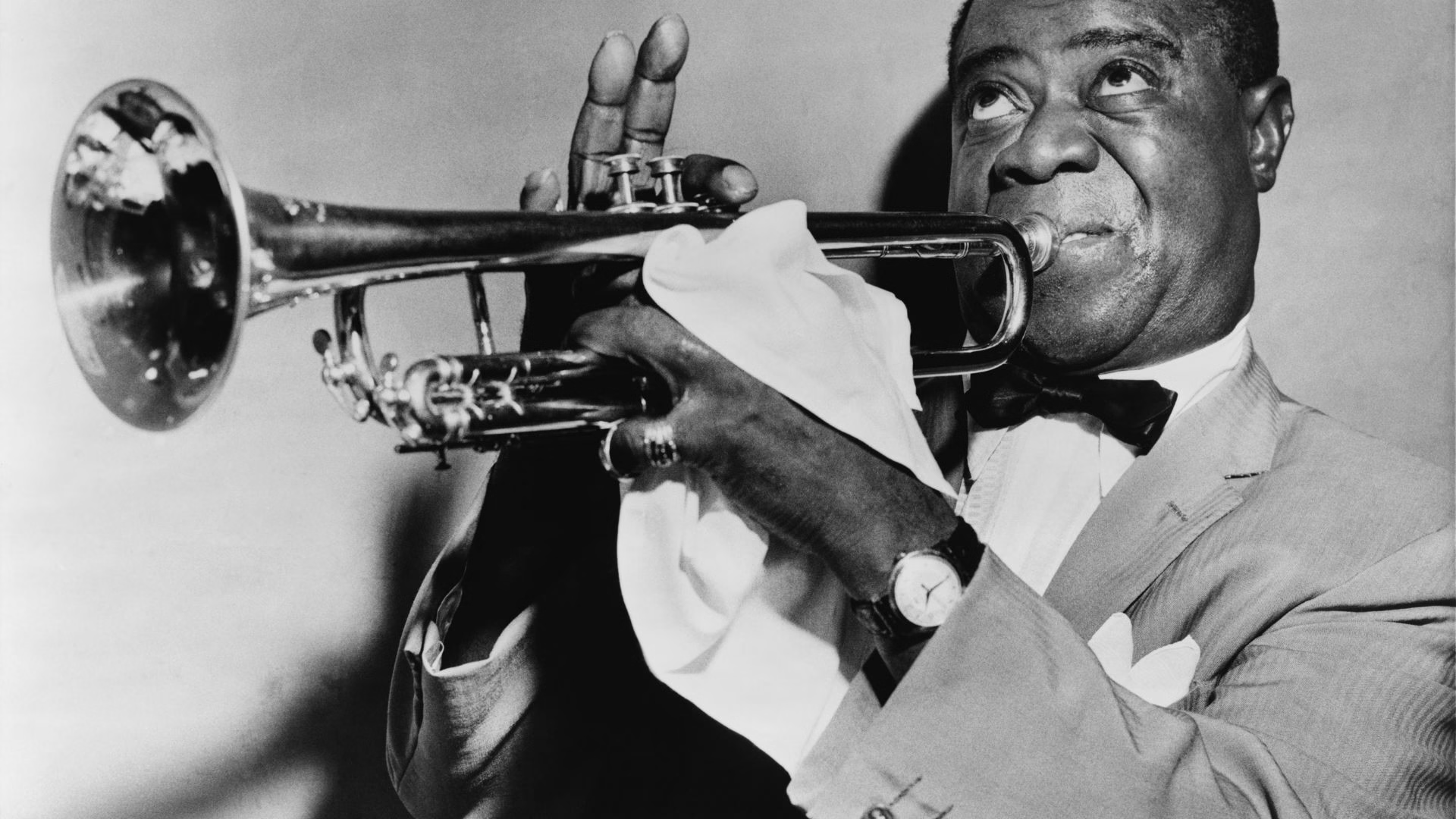




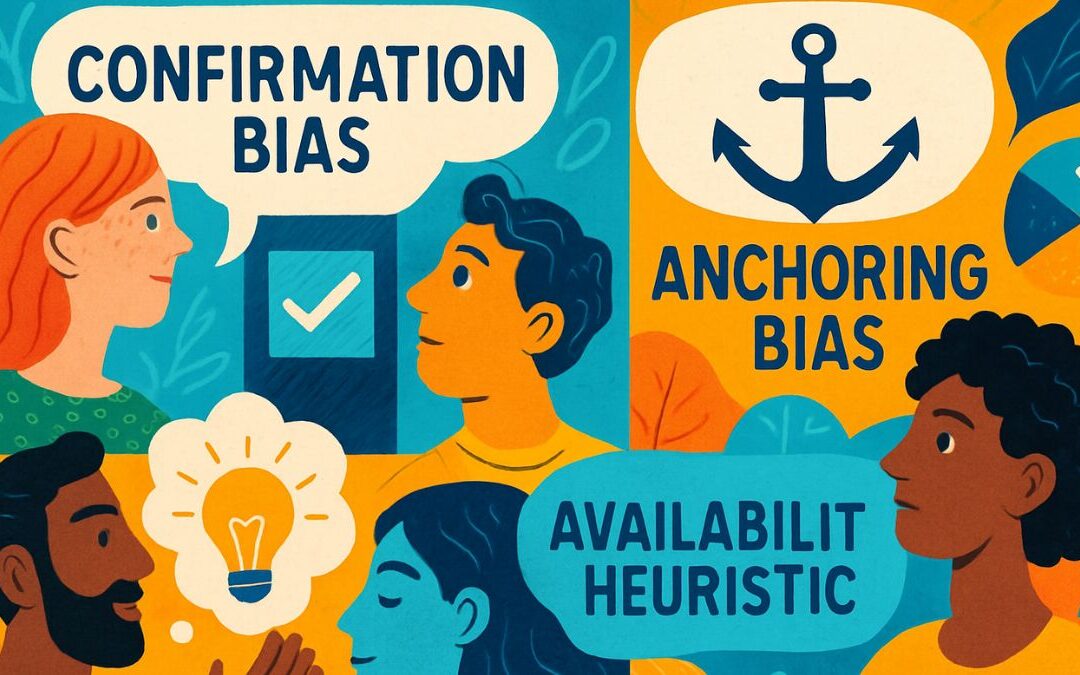
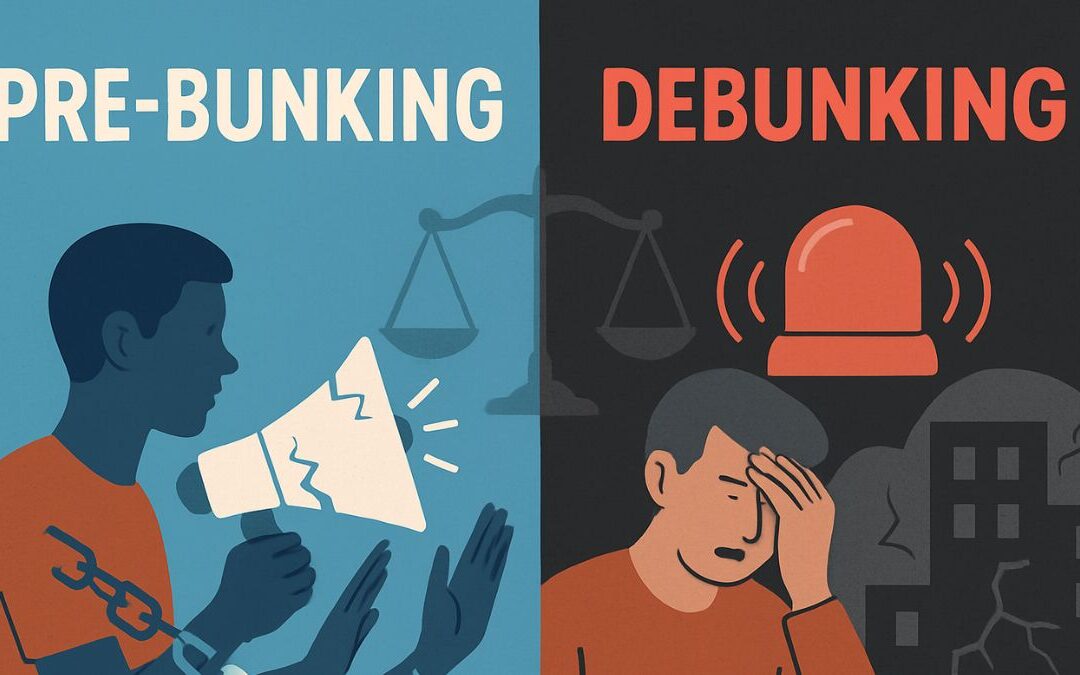
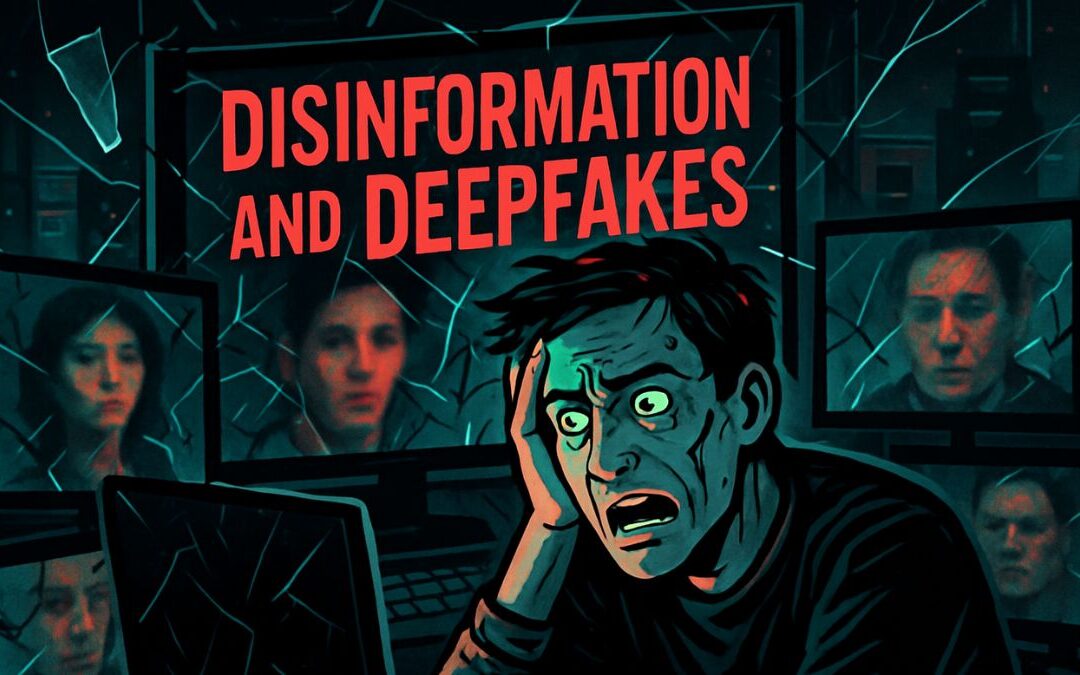
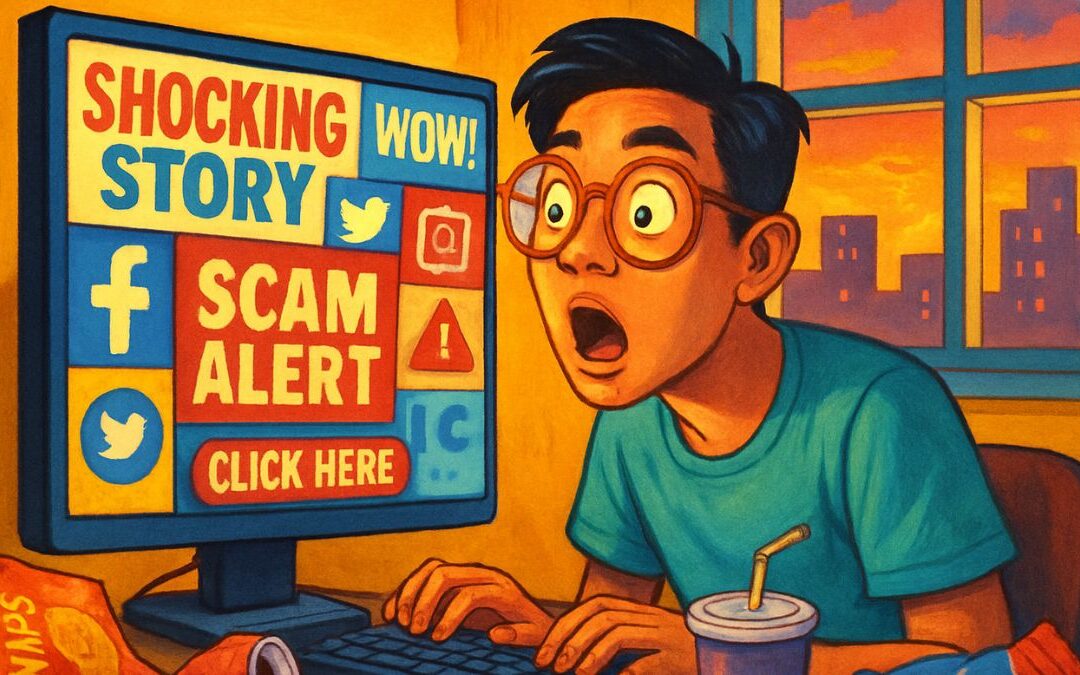
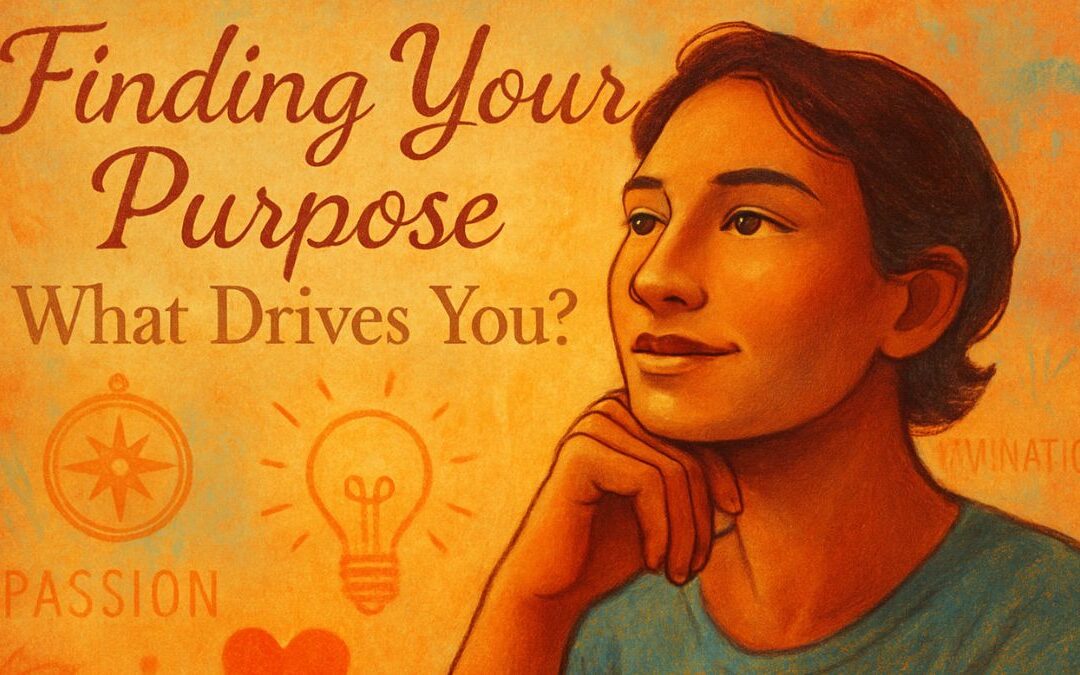
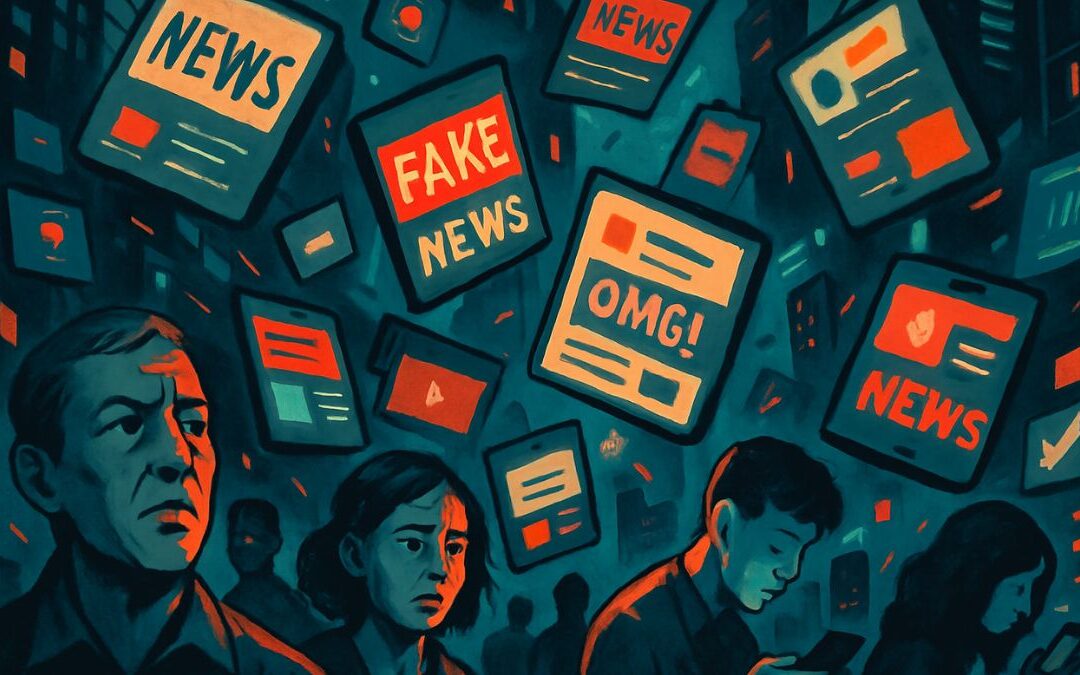
0 Comments